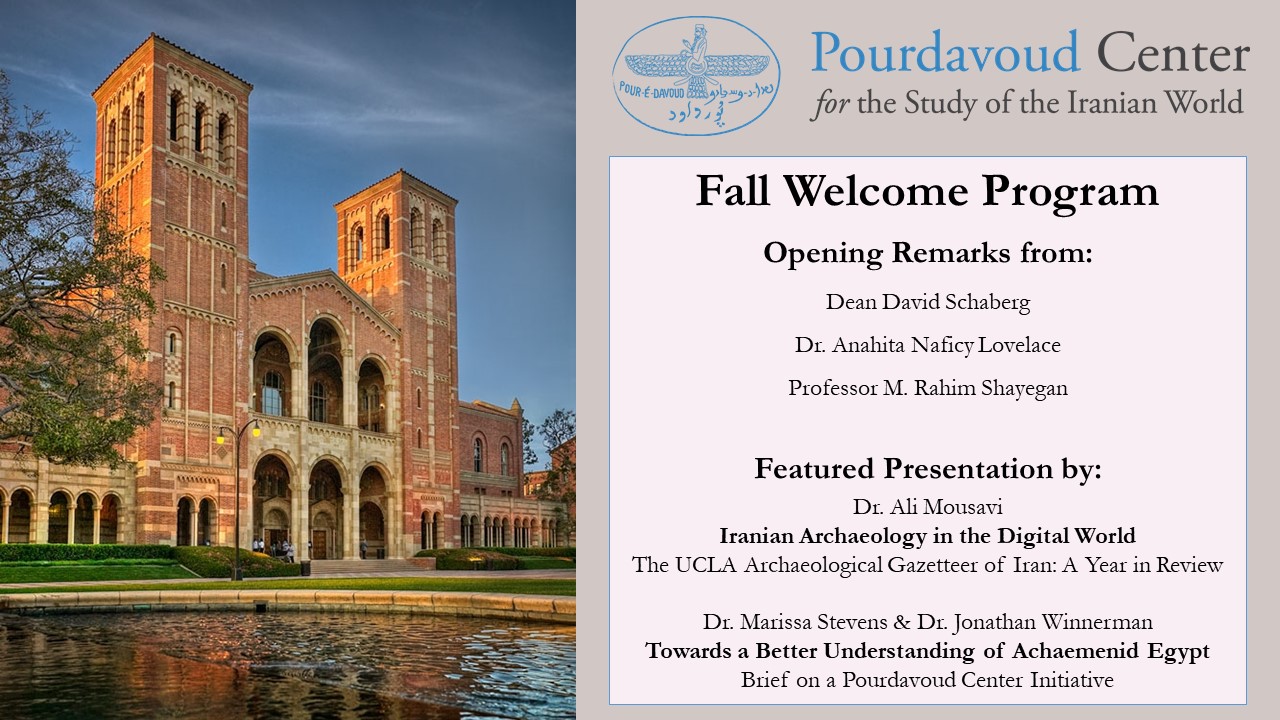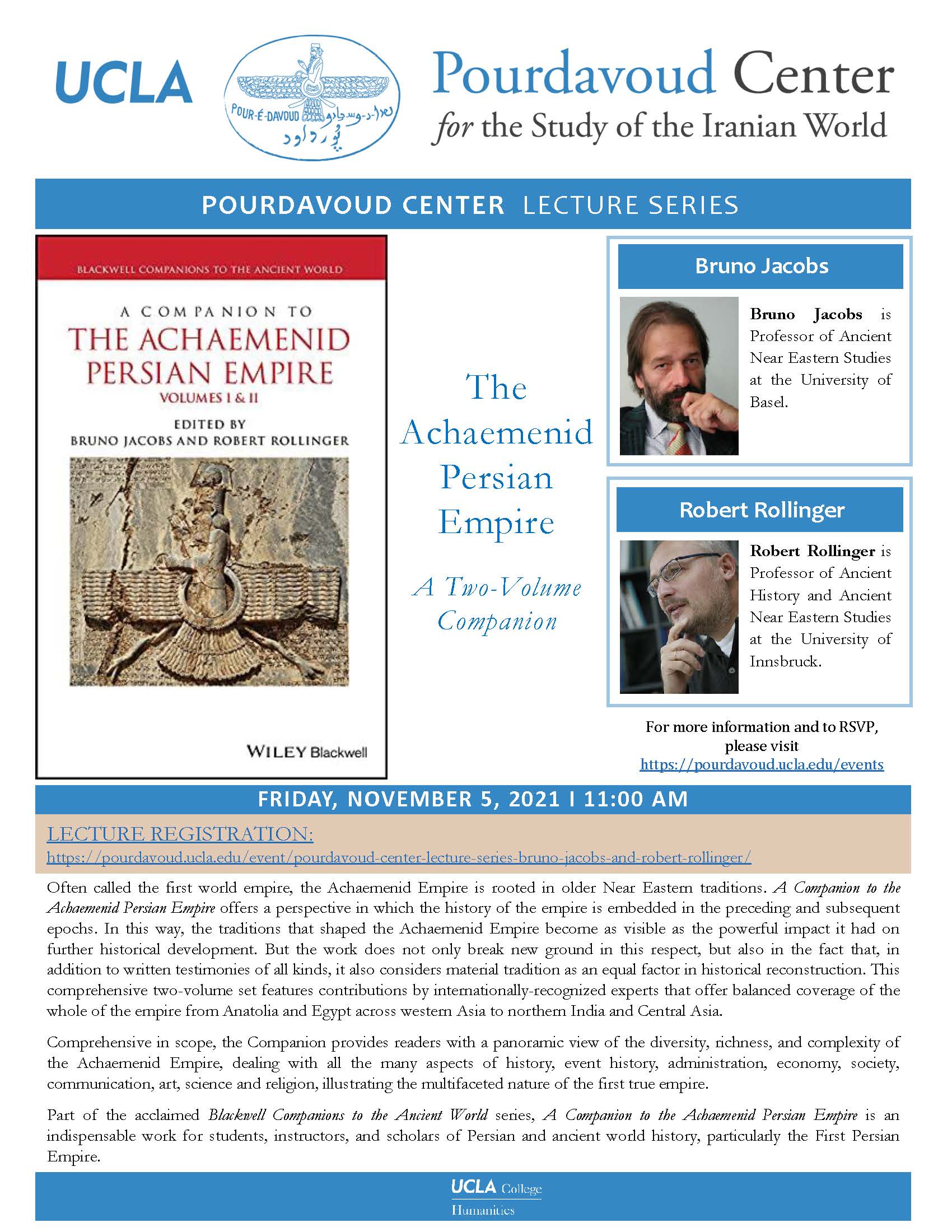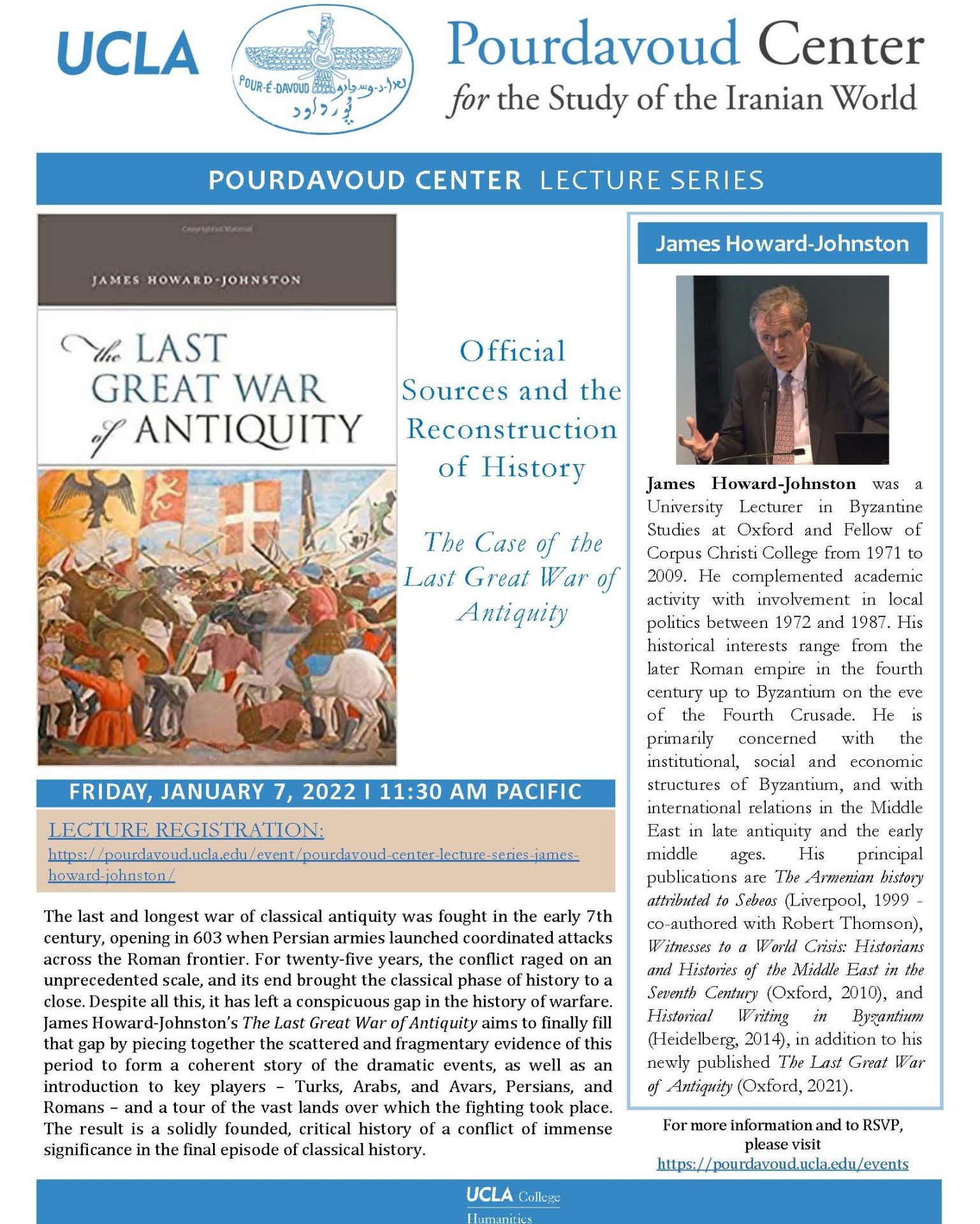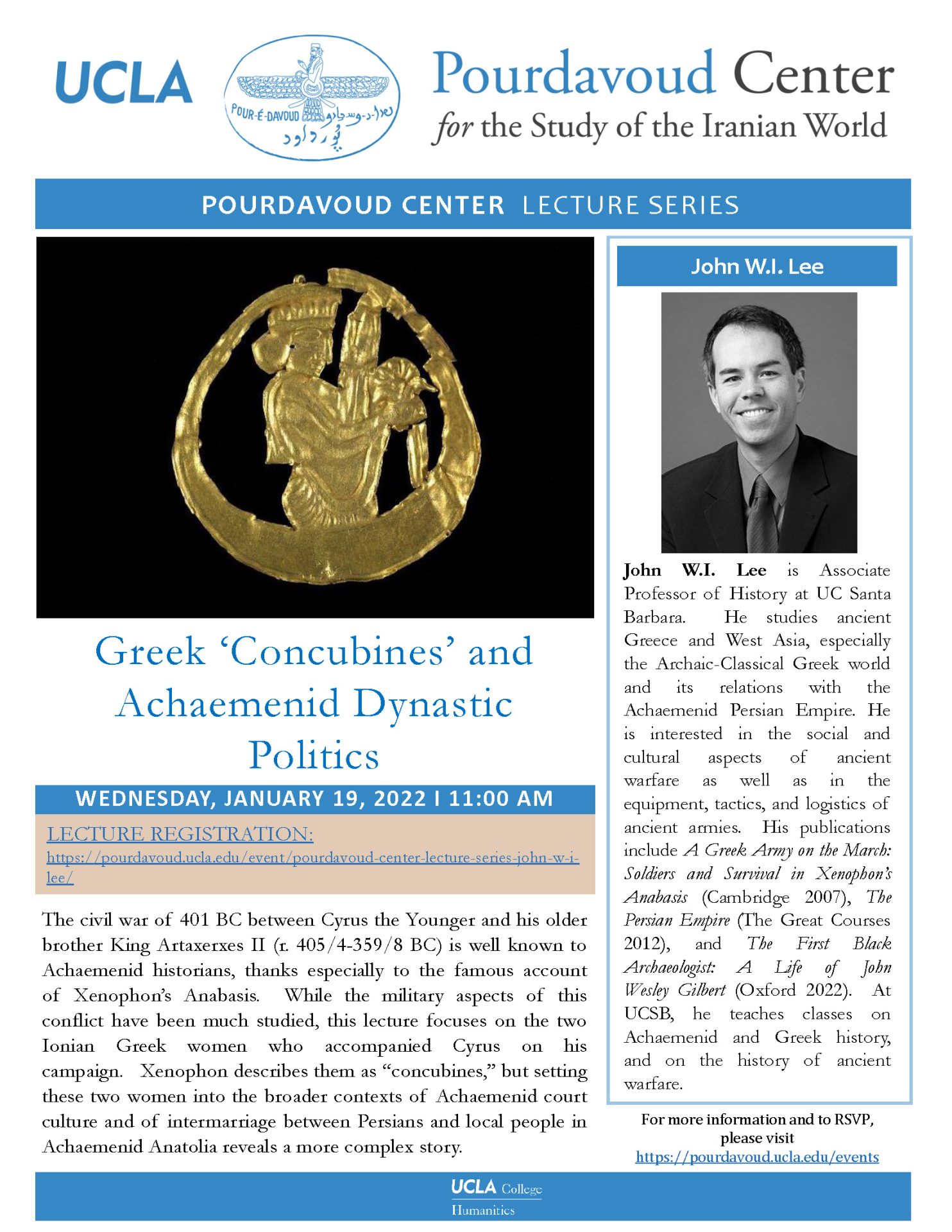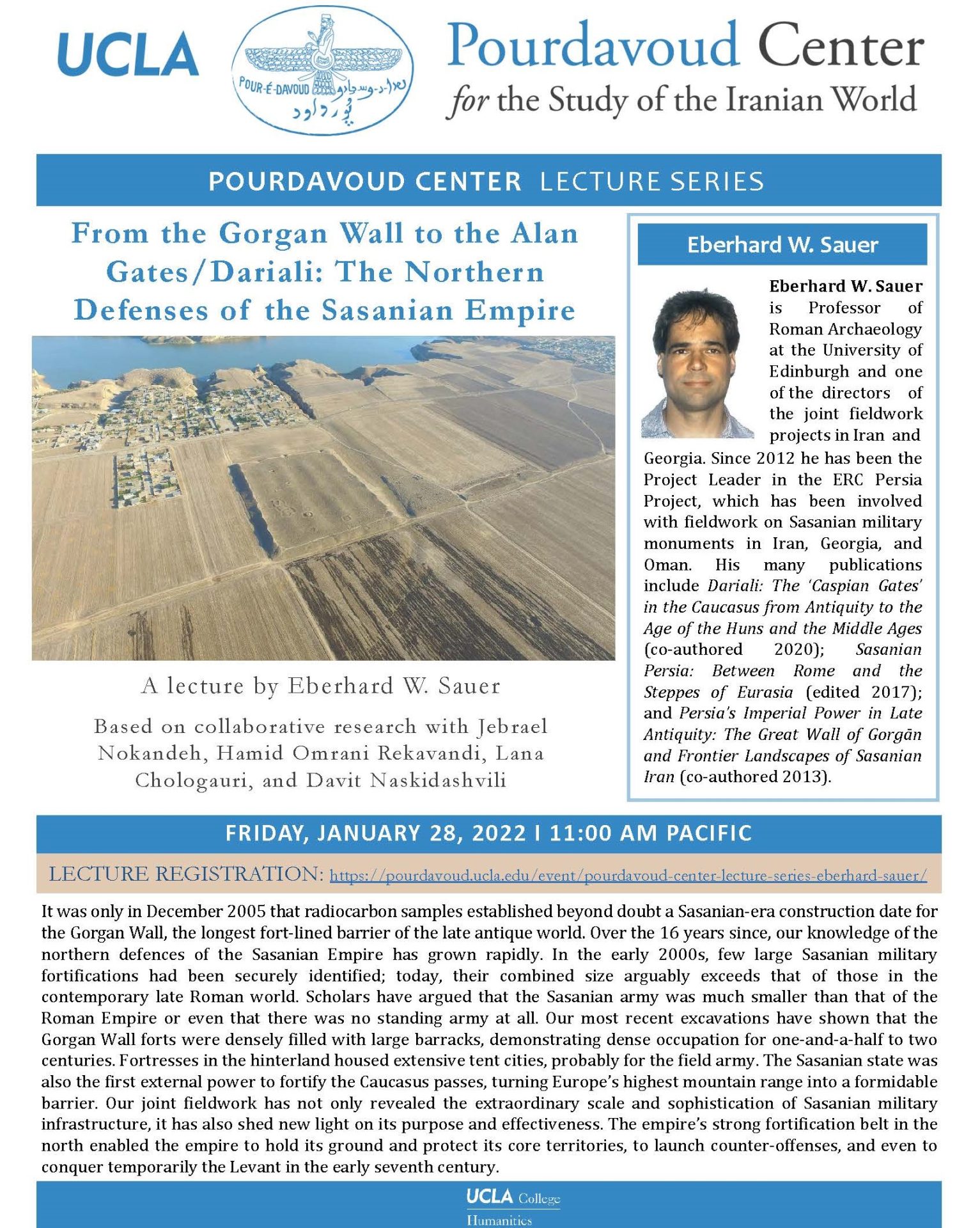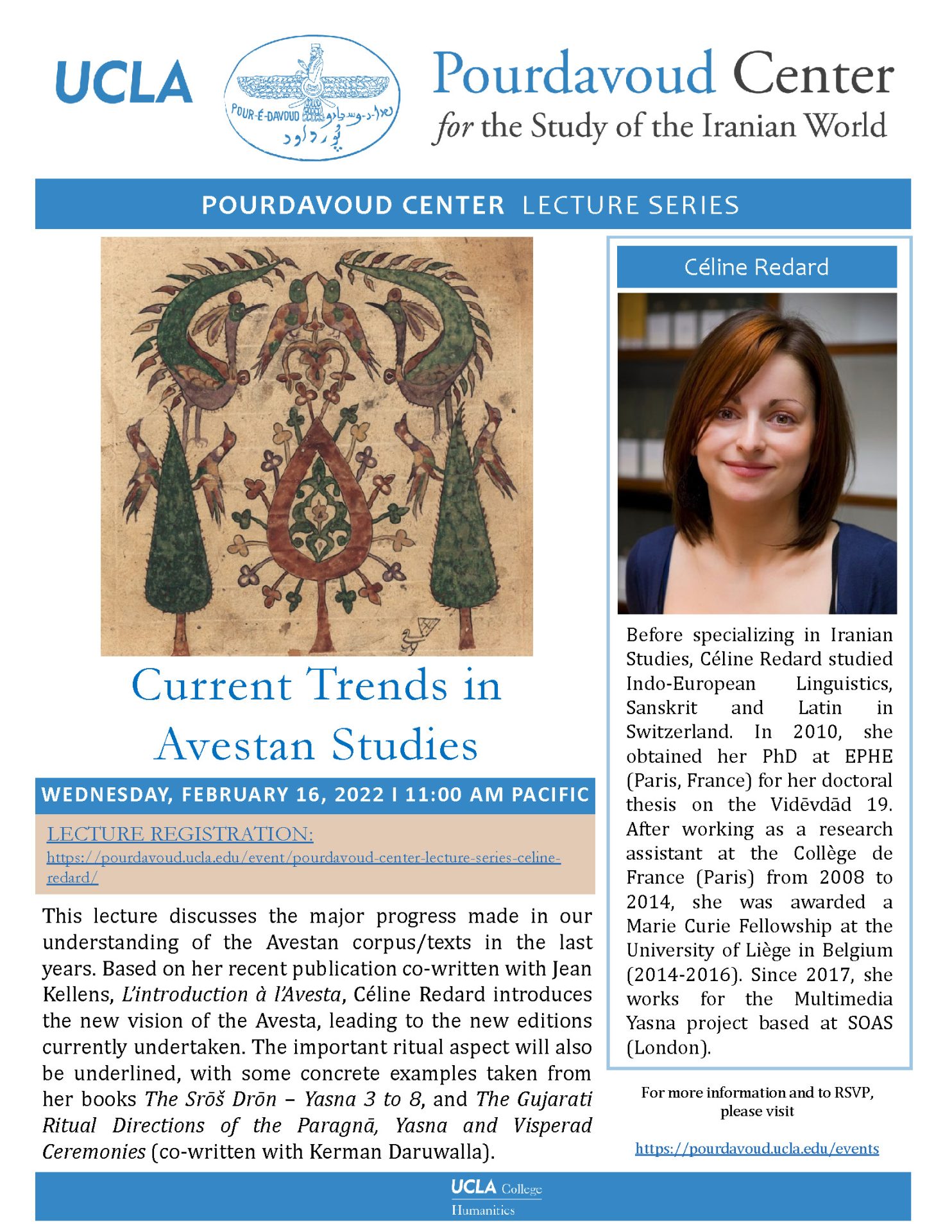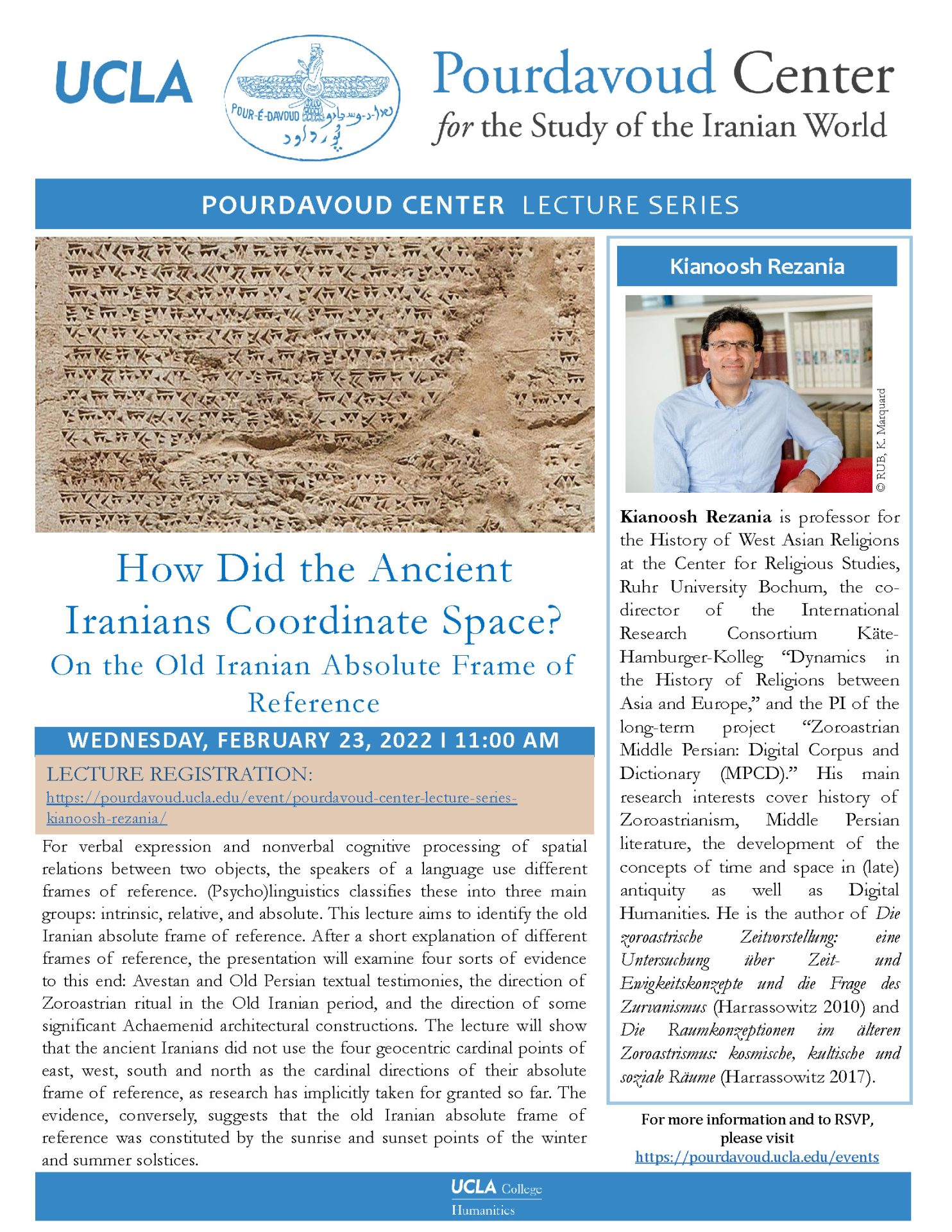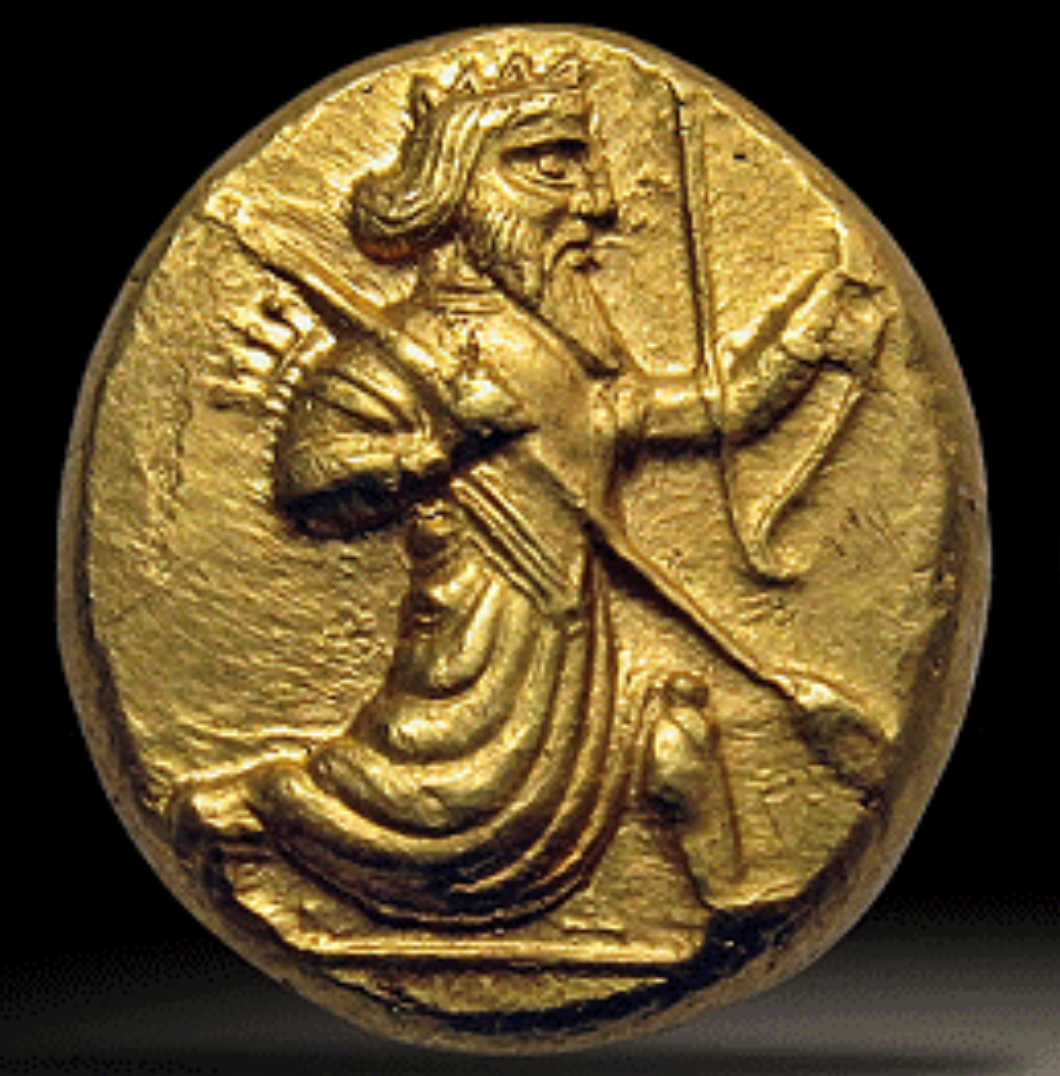Pourdavoud Center
Pourdavoud Center Lecture Series: Almut Hintze
The Yasna Ritual in Performance Up to the present day Zoroastrian priests perform a millennia old ritual, the Yasna, in which the recitation of ancient Avestan texts accompanies the performance of ritual actions. Using new visual source material of images and film clips, this lecture discusses the performance of the Yasna and its significance for...
Pourdavoud Center Fall Welcome Event
Please join us for a digital fall reception to celebrate the continued success of the Pourdavoud Center for the Study of the Iranian World. In the company of Dr. Anahita Naficy Lovelace and Mr. Jim Lovelace, the Center’s benefactors, David Schaberg, Dean of Humanities, M. Rahim Shayegan, the Center’s director, our staff, academic affiliates, colleagues, students,...
Pourdavoud Center Lecture Series: Bruno Jacobs and Robert Rollinger
The Achaemenid Persian Empire: A Two-Volume Companion Often called the first world empire, the Achaemenid Empire is rooted in older Near Eastern traditions. A Companion to the Achaemenid Persian Empire offers a perspective in which the history of the empire is embedded in the preceding and subsequent epochs. In this way, the traditions that shaped...
Pourdavoud Center Lecture Series: James Howard-Johnston
Official Sources and the Reconstruction of History: The Case of the Last Great War of Antiquity The last and longest war of classical antiquity was fought in the early 7th century, opening in 603 when Persian armies launched coordinated attacks across the Roman frontier. For twenty-five years, the conflict raged on an unprecedented scale, and...
Pourdavoud Center Lecture Series: John W.I. Lee
Greek ‘Concubines’ and Achaemenid Dynastic Politics The civil war of 401 BC between Cyrus the Younger and his older brother King Artaxerxes II (r. 405/4-359/8 BC) is well known to Achaemenid historians, thanks especially to the famous account of Xenophon’s Anabasis. While the military aspects of this conflict have been much studied, this lecture focuses on the two Ionian Greek women...
Pourdavoud Center Lecture Series: Eberhard Sauer
From the Gorgan Wall to the Alan Gates/Dariali: The Northern Defenses of the Sasanian Empire A lecture by Eberhard W. Sauer Based on collaborative research with Jebrael Nokandeh, Hamid Omrani Rekavandi, Lana Chologauri and Davit Naskidashvili It was only in December 2005 that radiocarbon samples established beyond doubt a Sasanian-era construction date for the...
Pourdavoud Center Lecture Series: Céline Redard
Current Trends in Avestan Studies This lecture discusses the major progress made in our understanding of the Avestan corpus/texts in the last years. Based on her recent publication co-written with Jean Kellens, L’introduction à l’Avesta, Céline Redard introduces the new vision of the Avesta, leading to the new editions currently undertaken. The important ritual aspect...
Pourdavoud Center Lecture Series: Kianoosh Rezania
How Did the Ancient Iranians Coordinate Space? On the Old Iranian Absolute Frame of Reference For verbal expression and nonverbal cognitive processing of spatial relations between two objects, the speakers of a language use different frames of reference. (Psycho)linguistics classifies these into three main groups: intrinsic, relative, and absolute. This lecture aims to identify the...
The World of Ancient Iran and the West
An International Symposium Convened by M. Rahim Shayegan (University of California, Los Angeles) and Jeffrey Spier (J. Paul Getty Museum) May 19–20, 2022 | 314 Royce Hall Morning Refreshments: 8:00 am Panels Begin: 9:00 am The Pourdavoud Center for the Study of the Iranian World and the Getty are convening for a third year an...
Biennial Ehsan Yarshater Lecture Series – An Afro-Eurasian “Hyperpower” and Its Ancient Near Eastern Roots (First Millennium BCE)
314 Royce HallThe 2022 Biennial Ehsan Yarshater Lecture Series Featuring Professor Robert Rollinger (University of Innsbruck) The Achaemenid Persian World Empire The series of lectures offers a novel and fresh perspective on one of the largest and most successful empires in world history, namely, the Achaemenid Persian World Empire (sixth to fourth century BCE), the central...



